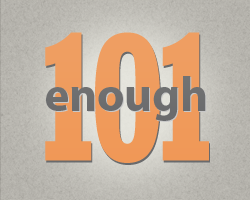
Editor’s Note: This post is a brief history, intended to provide a contextual background for understanding the complex issues that the Enough Project works on. It is part of the series Enough 101.
JEM – Justice and Equality Movement
SLA-MM – Sudan Liberation Army, led by Minni Minnawi
SLA-AW – Sudan Liberation Army, led by Abdel Wahid
LJM – Liberation and Justice Movement
DDPD – Doha Document for Peace in Darfur (2011)
DRA – Darfur Regional Authority
SPLM-N – Sudan People’s Liberation Movement
The most recent peace process started in Doha, Qatar in December 2010 with the Darfuri rebel movements, including JEM, negotiating with the Sudanese government. The main points of the negotiations were:
- Wealth sharing
- Restitution for Darfuri survivors
- A ceasefire agreement
- Release of JEM prisoners in Khartoum
- Recognition of JEM as a political party
But by May 2011 talks fell apart and JEM, the largest and most militarily sophisticated of the rebel groups in Darfur, removed itself from the process after failing to make gains in the negotiations, despite its provision of a counter-draft proposed agreement and increased attacks by the Sudanese Armed Forces, or SAF. Factions of the SLA-MM and SLA-AW who continue to engage in military operations, were likewise outside the peace process, but were engaged in back channel negotiations during the Doha talks.
In a scramble to salvage some sort of integrity of the Doha process in light of the extraordinary expense and international engagement, the Liberty and Justice Movement, or LJM, a group of 11 rebel factions, was cobbled together by international mediators for the purpose of negotiations to serve as the unified voice of the Darfuri rebels. However, the members of this group had been living abroad for decades and had little to no connection to the people in Darfur or military presence. Despite the withdrawal of JEM, and the non-participation of many of the other major rebel groups, the Doha talks continued, with LJM serving as the main Darfuri negotiators.
From January to July 2011, between 60,000 and 70,000 people were newly displaced in just two areas of Darfur while the SAF put increased pressure on rebel factions, including JEM while they were participating in the Doha talks.
LJM and the Sudanese government finally signed the Doha Document for Peace in Darfur, or DDPD, on July 14, 2011. In addition to the DDPD, LJM and GOS signed a separate protocol on LJM’s political participation and the integration of its limited forces into the national army.
The DDPD was not dramatically different than the DPA, although it included some new and nuanced provisions, with chapters providing for:
- Cessation of all hostilities and a permanent cease-fire and disarmament of militia groups.
- The protection of human rights and freedom for civil society groups.
- Power sharing and administrative status of Darfur, including affirmative action for Darfuri representation within the Sudanese government.
- The agreement stipulated that the permanent administrative status of Darfur would be determined through a referendum, within one year of the signing of the DDPD. Until the referendum, the States of Darfur would be governed by the newly created Darfur Regional Authority, or DRA.
- Darfur would share in Sudan’s wealth, and would benefit from a nation-wide strategy for poverty alleviation.
- The rights of internally displaced persons, or IDPs, and refugees to voluntarily return and that the government would provide them with protection and humanitarian services.
- Ensuring that all perpetrators of violations of human rights and international humanitarian law are held accountable.
- The establishment of a Truth, Justice and Reconciliation Commission, or TJRC, and a Special Court for Darfur to prosecute human rights violations.
- Amnesty to civil and military members and to prisoners of war.
- Disarmament, demobilization and reintegration, and integration of former combatants into SAF and Police Forces.
But violence in Darfur continues. The proliferation of militias, inter-communal violence, and the army itself are still threats to the civilian population. More than 2.5 million displaced Darfuris continue to live in camps in the country or over the border in eastern Chad.
On November 11, 2011, JEM joined the Kauda Alliance, formed in August 2011, comprised of the SPLM-N, SLA-AW, and SLA-MM, to create a new political and military alliance, known as the Sudanese Revolutionary Front, or SRF. Later on The Beja Congress and The Kush Liberation Movement joined, and a number of youth groups declared that they are supporting the SRF. The SRF is calling for regime change, inclusive, holistic negotiating and political processes, and the unification of all of Sudan’s opposition forces.
For more information and to see the sources used in this post, check out the Enough Project's Sudan Pinterest Board.

